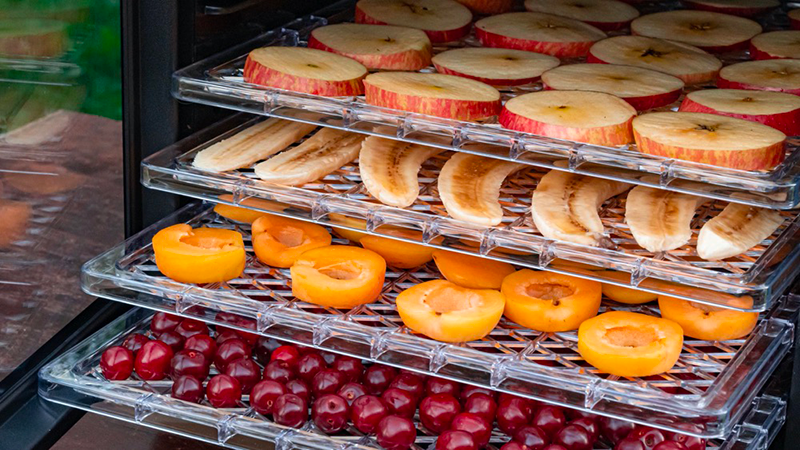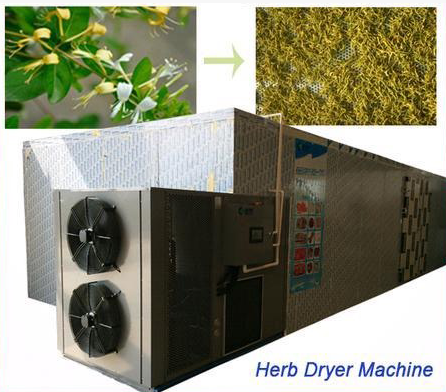
Content Menu
● Understanding Food Dehydrators
>> Types of Food Dehydrators
● Features of Modern Food Dehydrators
● Compact Solutions for Tight Spaces
>> Benefits of Compact Food Dehydrators
● Is There A Heat Pump Dryer That Fits in Tight Spaces?
>> Characteristics of Heat Pump Dryers
● Health Benefits of Using Food Dehydrators
● Popular Foods to Dehydrate
● Tips for Effective Dehydration
● Conclusion
● FAQ
>> 1. What is the smallest heat pump dryer available?
>> 2. How does a food dehydrator work?
>> 3. Can I use a heat pump dryer as a food dehydrator?
>> 4. What types of foods can I dehydrate?
>> 5. How long does it take to dehydrate food?
● Citations:
In the modern world, food preservation is more crucial than ever. As consumers become increasingly health-conscious and environmentally aware, the demand for food dehydrators has surged. This article explores the various types of food dehydrators available, their functionalities, and how they can fit into tight spaces while maintaining efficiency. We will also address the question of whether there is a heat pump dryer suitable for compact areas.

Understanding Food Dehydrators
Food dehydrators are appliances designed to remove moisture from food, thereby prolonging its shelf life and enhancing flavors. They work by circulating hot air around the food, which evaporates moisture. This process not only prevents spoilage but also retains the nutritional value of the food.
Types of Food Dehydrators
- Hot Air Dehydrators: These are the most common type, using fans to circulate hot air around food items. They can be further categorized into:
- Cabinet Dryers: Ideal for small to medium batches, these dryers have multiple trays stacked vertically.
- Tunnel Dryers: Suitable for larger operations, these machines allow continuous drying as products move through a tunnel.
- Rotary Dryers: These dryers rotate the food for even drying and are often used for specific products like herbs or vegetables.
- Microwave Dehydrators: These use microwave energy to heat and remove moisture quickly but are less common due to their cost.
- Freeze Dryers: These machines freeze the food first and then remove moisture through sublimation. They are typically used in commercial applications due to their high cost.
- Solar Dehydrators: Utilizing sunlight, these are eco-friendly options but depend heavily on weather conditions.
Features of Modern Food Dehydrators
Modern food dehydrators come equipped with various features that enhance their usability:
- Temperature Control: Adjustable temperature settings allow users to dry different types of foods effectively.
- Timers: Built-in timers ensure that foods are dried for the appropriate duration without constant monitoring.
- Multiple Trays: Many models come with several trays that can accommodate different foods simultaneously.
- Energy Efficiency: Newer models are designed to consume less energy while providing high performance.
Compact Solutions for Tight Spaces
When considering a dehydrator for a small kitchen or workspace, size becomes a critical factor. Fortunately, many manufacturers have developed compact models that do not compromise on capacity or functionality.
Benefits of Compact Food Dehydrators
- Space-Saving Design: Many compact dehydrators are designed to fit under cabinets or in small corners without taking up too much space.
- High Capacity: Despite their size, some models can still handle significant amounts of food thanks to vertical stacking designs.
- Portability: Smaller units can be easily moved or stored when not in use.

Is There A Heat Pump Dryer That Fits in Tight Spaces?
Heat pump dryers are known for their energy efficiency and ability to operate without external venting. These dryers recycle hot air and use it to dry clothes or other items, making them an excellent option for those looking to save space and energy.
Characteristics of Heat Pump Dryers
- Energy Efficiency: They consume significantly less electricity compared to traditional dryers.
- Compact Models Available: Many brands now offer slimline heat pump dryers that fit into tight spaces while still providing adequate drying capacity.
- Versatility: Some heat pump models can also double as food dehydrators, offering multifunctionality for those with limited space.
Health Benefits of Using Food Dehydrators
Using a food dehydrator not only preserves food but also enhances its nutritional profile. Here are some health benefits associated with dehydrated foods:
- Nutrient Retention: Dehydrating foods helps maintain essential vitamins and minerals that might be lost during other preservation methods like canning or freezing. For example, vitamin C levels remain high in dried fruits compared to canned versions[1].
- Reduced Risk of Foodborne Illnesses: The dehydration process inhibits the growth of bacteria, yeast, and mold by removing moisture, which reduces the risk of spoilage and contamination[10].
- Enhanced Flavor Concentration: Removing water from fruits and vegetables intensifies their natural flavors, making them more enjoyable as snacks or ingredients in recipes[7].
Popular Foods to Dehydrate
Many foods can be effectively dehydrated, allowing for a variety of snacks and ingredients:
- Fruits: Apples, bananas, mangoes, and berries make excellent snacks when dried. They can be enjoyed on their own or added to cereals and baked goods.
- Vegetables: Carrots, tomatoes, bell peppers, and leafy greens like kale can be dehydrated for use in soups or as healthy snacks[3].
- Meats: Jerky is a popular dehydrated meat product that can be made from beef, turkey, or chicken. The dehydration process enhances flavor while preserving protein content[9].
- Herbs and Spices: Fresh herbs like basil, thyme, and oregano can be dried for long-term storage without losing flavor[4].
Tips for Effective Dehydration
To maximize the effectiveness of your food dehydrator and achieve optimal results:
1. Slice Uniformly: Ensure that all pieces of food are cut to similar sizes to promote even drying.
2. Pre-Treat Certain Foods: Some fruits benefit from pre-treatment (like soaking in lemon juice) to prevent browning during dehydration.
3. Monitor Temperature Settings: Different foods require specific temperature settings; refer to your dehydrator's manual for guidance on optimal temperatures[5].
4. Store Properly After Drying: Once dried, store foods in airtight containers away from light and moisture to maintain freshness[6].
5. Experiment with Flavors: Add spices or seasonings before dehydration to enhance flavors; this is particularly effective with meats and vegetables[8].
Conclusion
In summary, food dehydrators play a vital role in preserving food while maintaining its nutritional value. With various types available—ranging from hot air to freeze dryers—there is a model suitable for every need and space constraint. For those considering heat pump dryers, compact options exist that provide efficient drying solutions without taking up too much room.
Food dehydration not only extends shelf life but also enhances flavors while contributing positively to health by retaining nutrients. The versatility of dehydrated foods allows them to be incorporated into various meals and snacks seamlessly.

FAQ
1. What is the smallest heat pump dryer available?
The smallest heat pump dryers typically measure around 44 cm in depth and can handle loads up to 6 kg, making them ideal for compact living spaces.
2. How does a food dehydrator work?
A food dehydrator works by circulating hot air around the food items, which evaporates moisture and preserves the food's flavor and nutrients.
3. Can I use a heat pump dryer as a food dehydrator?
Yes, some heat pump dryers have multifunctional capabilities that allow them to be used as food dehydrators as well.
4. What types of foods can I dehydrate?
You can dehydrate fruits, vegetables, herbs, meats (for jerky), and even some dairy products using a food dehydrator.
5. How long does it take to dehydrate food?
The time required to dehydrate food varies based on the type of food and its moisture content but generally ranges from several hours to overnight.
Citations:
[1] https://www.webstaurantstore.com/guide/741/food-dehydrators-buying-guide.html
[2] https://thruhikers.co/dehydrators/
[3] https://www.callmelore.com/fool-proof-healthy-dehydrator-recipes/
[4] https://www.bestbuy.com/discover-learn/10-reasons-to-buy-a-food-dehydrator/pcmcat1634332391134
[5] https://www.lowes.com/n/buying-guide/best-food-dehydrator-buying-guide
[6] https://eatsleepwild.com/homemade-dehydrated-backpacking-meals/
[7] https://airtekdehydrator.com/health-advantages-using-food-dehydrator/
[8] https://www.choice.com.au/home-and-living/kitchen/benchtop-cooking/buying-guides/food-dehydrators
[9] https://www.commercialdehydrators.com.au/dehydrating-recipes-filters
[10] https://www.webmd.com/diet/dehydrating-food-good-for-you











